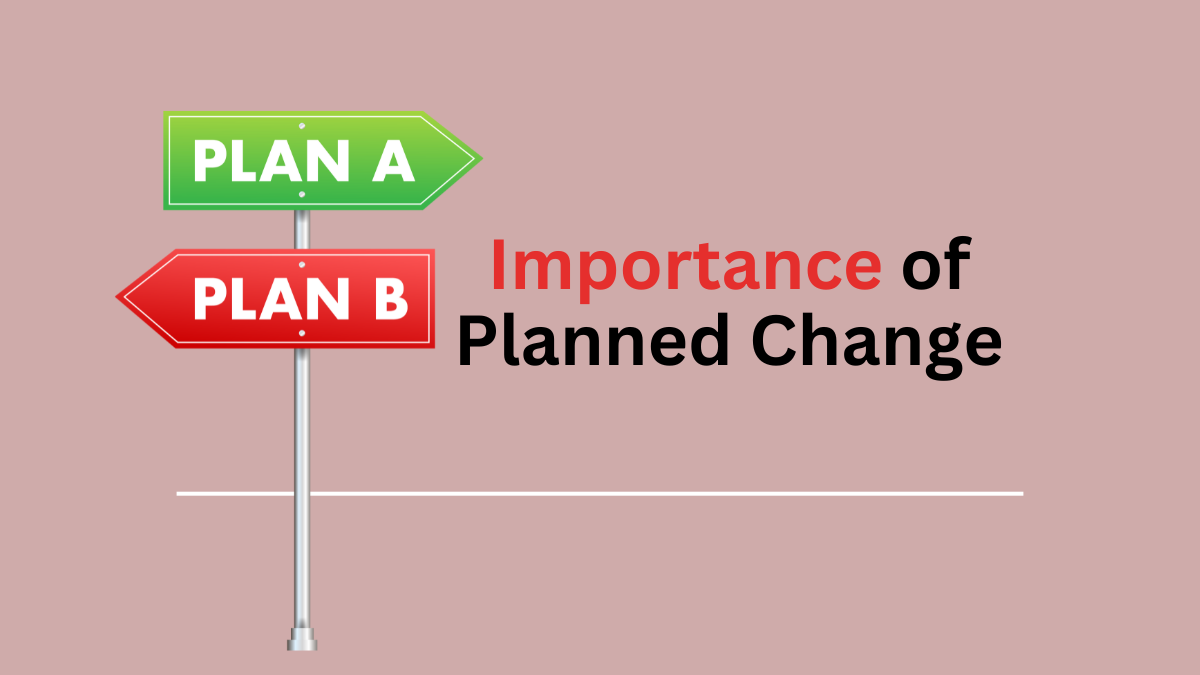Importance of Planned Change
Change is necessary in the workplace to meet new market trends and consumer demands. Planned change benefits organizations in various ways. Let’s explore the 10 importance of planned change in the workplace:
Adaptation to Environmental Changes
In the ever-shifting landscape of business, planned change acts as an organizational compass, enabling proactive adaptation to environmental differences.
It’s akin to fitting a sail to catch the winds of market shifts, technological advancements, and regulatory currents. This strategic foresight transforms organizations into resilient entities, agile enough to navigate the unpredictable seas of the business environment.
Meeting Customer Expectations
Picture planned change as a tailor’s needle, skillfully stitching the fabric of products, services, and processes to align seamlessly with the evolving tapestry of customer expectations.
In the dynamic business arena, customer needs waltz through a constant metamorphosis. Planned change ensures that organizations don’t miss a beat, crafting offerings that harmonize with changing customer preferences for sustained satisfaction.
Effective Competition Management
In the arena of business competition, planned change is the gladiator’s armor, providing strategic responsiveness. It empowers organizations to flex their operational muscles, adapting procedures and systems to outsmart emerging market challenges.
With the planned change, organizations don the helmet of competitiveness, ready to face adversaries with calculated moves.
Cost Management and Efficiency
Think of planned change as a financial steward, meticulously calculating the budgetary landscape. It’s a financial alchemist turning the base metals of costs into the gold of operational efficiency.
Through careful planning, organizations assess costs, create budgetary roadmaps, and steer clear of the treacherous waters of excessive spending, safeguarding the ship’s profitability.
Increased Rate of Success
Unlike a spontaneous burst of fireworks, planned change is a carefully orchestrated symphony. It undergoes a meticulous composition, addressing potential discordant notes and leveraging opportunities identified through thoughtful analysis.
Read More: What is Management?
This deliberate approach increases the likelihood of success, transforming the organizational journey into a well-rehearsed performance.
Enhanced Employee Relationships and Company Culture
Planned change is a master storyteller, engaging employees through a narrative of transformation. It’s a collaborative journey where every employee becomes a protagonist, contributing to the evolving plot.
This inclusive approach fosters a positive company culture, where resistance to change metamorphoses into a shared excitement, and employees feel valued and well-informed as characters in the unfolding tale of change.
Read More: Communication in Management
Improved Customer Relationships
In the realm of customer relationships, planned change is a trusted messenger, delivering news of evolution before the headlines break. Rapid and unplanned changes may disrupt the delicate dance between organizations and their customers.
Planned change, acting as a herald, ensures that organizations communicate changes beforehand, maintaining the rhythm of customer service and preserving strong relationships.
Risk Reduction
Imagine planned change as a seasoned navigator steering a ship away from risky waters. Sudden changes, like unforeseen storms, introduce risks such as decreased productivity, dissatisfaction, and increased costs. Planned change acts as the compass, allowing organizations to prepare for the journey, and mitigate risks through careful planning and execution.
Read More: Objectives of Organizational Change in Business
Shorter Implementation Timelines
Planned change is a seasoned project manager armed with a well-crafted timeline. It’s akin to setting sail with a map that marks projected deadlines for each phase of the journey.
This strategic timeline empowers organizations to control the pace of change, distribute tasks effectively, and achieve goals within specified timeframes, making the journey efficient and purposeful.
Minimized Impact on Operations and Productivity
This is the last one from our list of 10 important of planned changes. Think of planned change as a conductor orchestrating a seamless performance. Abrupt changes, like dissonant notes, can lead to confusion and decreased productivity.
Planned change methods act as the conductor’s baton, ensuring a harmonious transition. They incorporate safeguards to maintain productivity and communication, allowing the organizational symphony to play on without missing a beat.
Hence, these are the 10 importance of planned change in the workplace.
Read Next: 7 Steps in Process of Planned Change

Sujan Chaudhary holds a Bachelor in Business Administration (BBA) degree and is currently pursuing an MBA degree. He loves to share his business knowledge with the rest of the world.
